The Kapok Tree, also known by names like Red Silk Cottontree, Cotton Tree, Malabar Silk-cotton Tree, and Red Cotton Tree, is a fast-growing woody species belonging to the Malvaceae family. Native to regions stretching from India to Southeast Asia and Northern Australia, it is a popular choice for gardens and parks due to its stunning ornamental appeal.
This tree is instantly recognizable by its vibrant, spiky red flowers that bloom in striking contrast to its bare branches. Its seed pods produce a fluffy, cotton-like material once widely used for filling pillows and mattresses, giving the tree its association with silk cotton. Both versatile and visually captivating, the Kapok Tree is a celebrated feature in landscapes across its native regions and beyond.
| Common name | Kapok Tree, Red Silk Cottontree, Cotton Tree, Malabar Silk-cotton Tree, Red Silk-cotton, Red Cotton Tree, Ambiguously, Silk-cotton, Kapok |
| Botanical name | Bombax ceiba |
| Family | Malvaceae |
| Species | ceiba |
| Origin | India to Southeast Asia and Northern Australia |
| Life cycle | Woody |
| Plant type | Tree |
| Hardiness zone | 10, 11 |
| Sunlight | Full Sun |
| Maintenance | Low |
| Soil condition | High Organic Matter |
| Drainage | Well-Drained |
| Growth rate | Medium |
| Spacing | more than 60 ft. |
| Harvest time | Summer |
| Flowering period | Spring |
| Height | 6 – 75 ft. |
| Flower color | Orange |
| Leaf color | Green |
| Fruit color | Brown, Copper |
| Fruit type | Capsule |
| Fruit benefit | Showy |
| Flower benefit | Showy |
| Garden style | Winter Garden |
| Uses | Lawn |
I. Appearance and Characteristics
Bombax ceiba, like other trees of the genus Bombax, is commonly known as cotton tree. More specifically, it is sometimes known as Malabar silk-cotton tree; red silk-cotton; red cotton tree; or ambiguously as silk-cotton or kapok, both of which may also refer to Ceiba pentandra.
Bombax ceiba grows to an average of 20 meters, with old trees up to 60 meters in wet tropical regions. The trunk and limb bear numerous conical spines particularly when young, but get eroded when older. The leaves are palmate with about 6 leaflets radiating from a central point (tip of petiole), an average of 7–10 centimeters (2+5⁄6–4 in) wide, 13–15 centimeters (5+1⁄6–5+5⁄6 in) in length. The leaf’s long flexible petiole is up to 20 centimeters (8 in) long.
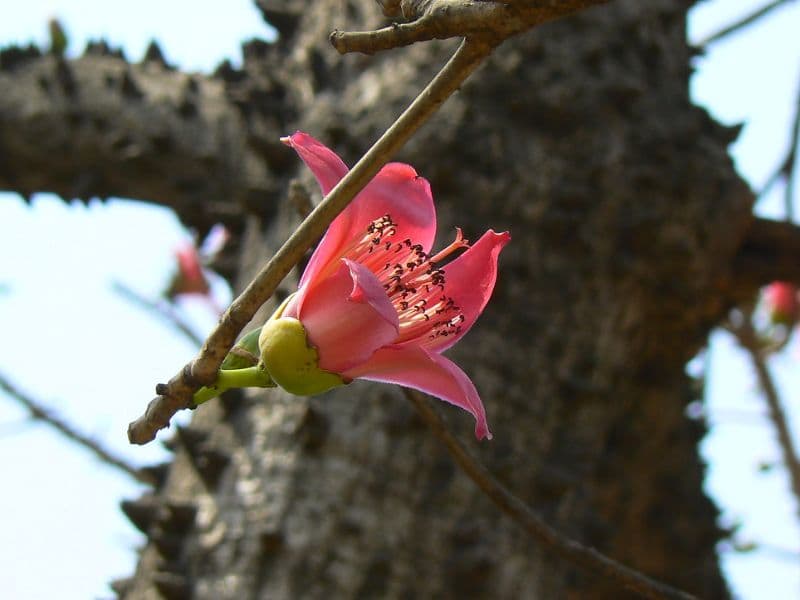
Cup-shaped flowers solitary or clustered, axillary or sub-terminal, fascicles at or near the ends of the branches, when the tree is bare of leaves, an average of 7–11 centimeters (2+5⁄6–4+1⁄3 in) wide, 14 centimeters (5+1⁄2 in) in width, petals up to 12 centimeters (4+2⁄3 in) in length, calyx is cup-shaped usually 3 lobed, an average of 3–5 centimeters (1+1⁄6–2 in) in diameter.
Staminal tube is short, more than 60 in 5 bundles. The stigma is light red, up to 9 centimeters (3+1⁄2 in) in length, ovary is pink, 1.5–2 centimeters (2⁄3–5⁄6 in) in length, with the skin of the ovary covered in white silky hair at 1mm long. Seeds are numerous, long, ovoid, black or gray in color and packed in white cotton.
The fruit, which reaches an average of 13 centimeters (5 in) in length, is light-green in color in immature fruits, brown in mature fruits.
The cotton tree (Bombax ceiba) is not generally considered to be toxic to humans or animals. However, the seeds of the cotton tree contain a poisonous substance called cardenolide, which can be toxic if ingested in large quantities.
II. How to Grow and Care
Watering
Originating from tropical regions, red Silk Cotton Tree is accustomed to periods of heavy rainfall followed by dry spells. This species thrives with a watering schedule that mimics its native climate, maintaining a balance between moisture and drought tolerance.
Accordingly, red Silk Cotton Tree benefits from watering once every 1-2 weeks, allowing the soil to dry out slightly between waterings. Typically grown outdoors due to its size and structural presence, red Silk Cotton Tree displays a remarkable resilience in adapting to various soil conditions, provided they are well-draining to prevent root rot.
Fertilizing
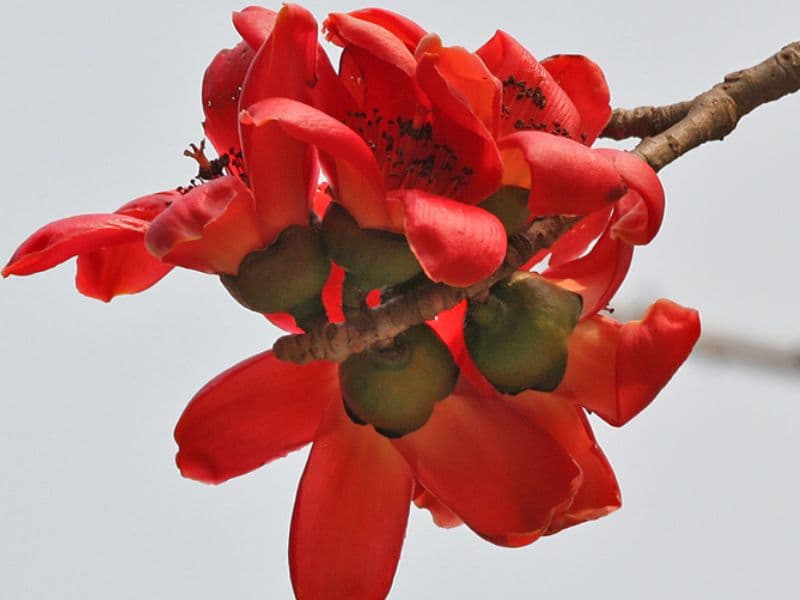
For red Silk Cotton Tree, a balanced fertilizer, with equal NPK ratios, is recommended. Apply quarterly, moderately, to support robust growth and vibrant blooms. In the growth season, increase frequency to bi-monthly, adjusting for rain patterns which dilute nutrients. Use sparingly; over-fertilization can harm the root system. Apply at the driplin, not near the trunk, to prevent burn. Experienced gardeners use compost for added benefits. Always water post-application for optimal nutrient absorption.
Planting Instructions
To grow a semal tree, follow these steps:
- Choose a location: The semal tree needs total sun exposure and well-draining soil. Avoid planting it in low-lying areas where frost may settle.
- Purchase a tree: You can buy a semal tree from a nursery or online. Be sure to choose a variety that is well-suited to your climate.
- Plant the tree: When planting the tree, be sure to dig a broad and deep hole into accommodating the roots. Place the tree in the hole and fill it with soil, tamping it down gently to remove any air pockets. Water the tree well after planting.
By following these steps, you can easily grow a healthy semal tree that will produce a good crop of showy, red flowers and fluffy seed pods.
Pruning
Prune the tree annually to remove any crossed or damaged branches and introduce it to a central leader system.
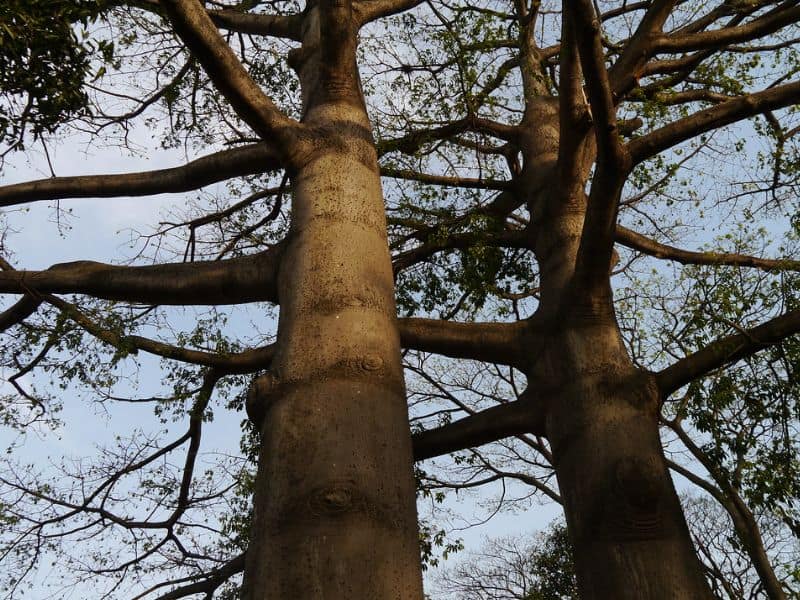
Propagation
Red Silk Cotton trees can be propagated by seed or cuttings of half-ripe wood. The seeds have a high germination rate when sown fresh without any pre-treatment. However, some reports suggest that soaking the seeds for 12 hours prior to sowing can improve germination rates, especially for seeds that have dried somewhat. The seeds can be sown in a sunny position, either in the desired location or in a nursery bed. Germination usually occurs within 10 to 25 days.
Once the seedlings reach a height of 5cm, they can be transplanted into individual containers and grown for 12 months before planting them in their permanent location. Cuttings of half-ripe wood can also be used for propagation.
Transplanting
The perfect season to transplant red Silk Cotton Tree is during late winter and early spring. This time ensures minimum stress and promotes root growth, setting the foundation for a healthy plant. It thrives best when transplanted in a sunny location with good soil drainage. Always ensure the tree has ample space to grow!
Mulching
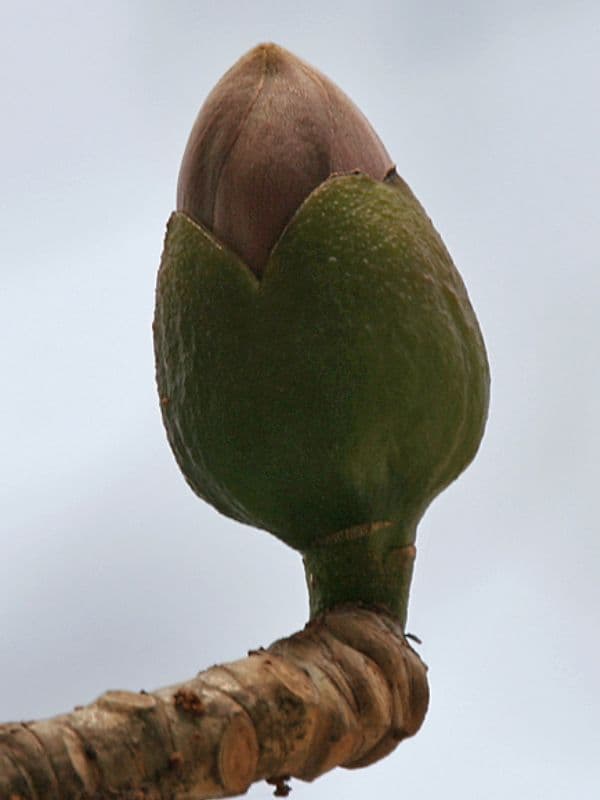
Mulch around the tree’s base to conserve moisture and suppress weeds.
Pests and Diseases
- Pest control
Get rid of pests like aphids and scale insects. If you notice any pests, try using natural methods of control, such as introducing predators or using horticultural oil or soap.
- Disease prevention
The semal tree can be prone to certain diseases, such as powdery mildew and leaf spot. To prevent these diseases, avoid overhead watering, keep the tree well-pruned, and remove any infected branches.
III. Uses and Benefits
- Culinary uses
In Thailand, the dry cores of the Bombax ceiba flower (Thai: งิ้ว) are an essential ingredient of the nam ngiao spicy noodle soup of the cuisine of Shan State and Northern Thailand, as well as the kaeng khae curry.
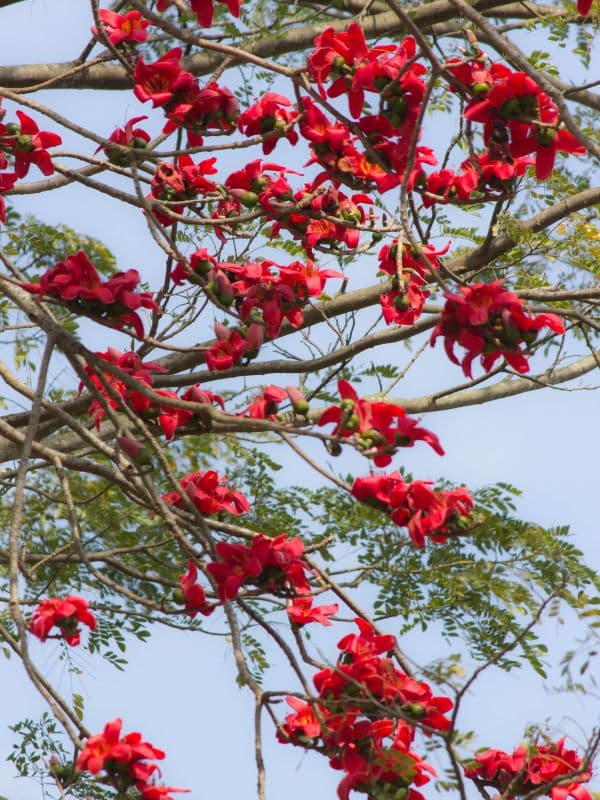
- Role in Cantonese culture
Bombax ceiba is literally known as “cotton-tree flowers” in Cantonese. It plays a vital role in Southern Chinese, especially Guangzhou Cantonese culture. It is the official flower of Guangzhou, the capital of Guangdong Province in southern China. Flowering season takes places from late February to early May. Fruiting can start as early as March.
At the peak of its flowering season, elderly people may often be seen gathering the fallen flowers from the ground to dry, which they later use to prepare tea or soup. The flowers are very attractive to local wildlife such as the fruit-eating Japanese white-eye, which often draws a hole in an unopened flower bud. Honey bees and bumblebees are also attracted to the flowers to collect pollen and nectar. Because the flowers attract many insects, crab spiders can be occasionally found on a fully opened flower, hunting bees.
The flower was also used as the trademark of the Guangzhou-based China Southern Airlines.
- Other uses
The white fluffy fibers are carded into thread and woven into textiles in Nepal and India.
Find Where to Buy the Best Red Silk Cotton Tree (Bombax ceiba)


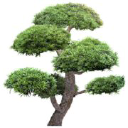











Leave a Reply